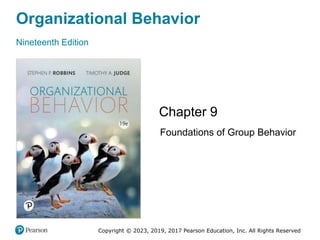Chapter 9 of the 'Organizational Behavior' textbook focuses on the foundations of group behavior, highlighting the different types of groups, the punctuated-equilibrium model of group development, and the influence of roles and norms on individual behavior. It also discusses factors affecting group performance, including status, size, and cohesion, as well as the pros and cons of group decision-making processes. The chapter concludes with implications for managers on effectively supporting group dynamics and addressing potential challenges like social loafing and groupthink.


































